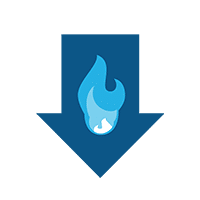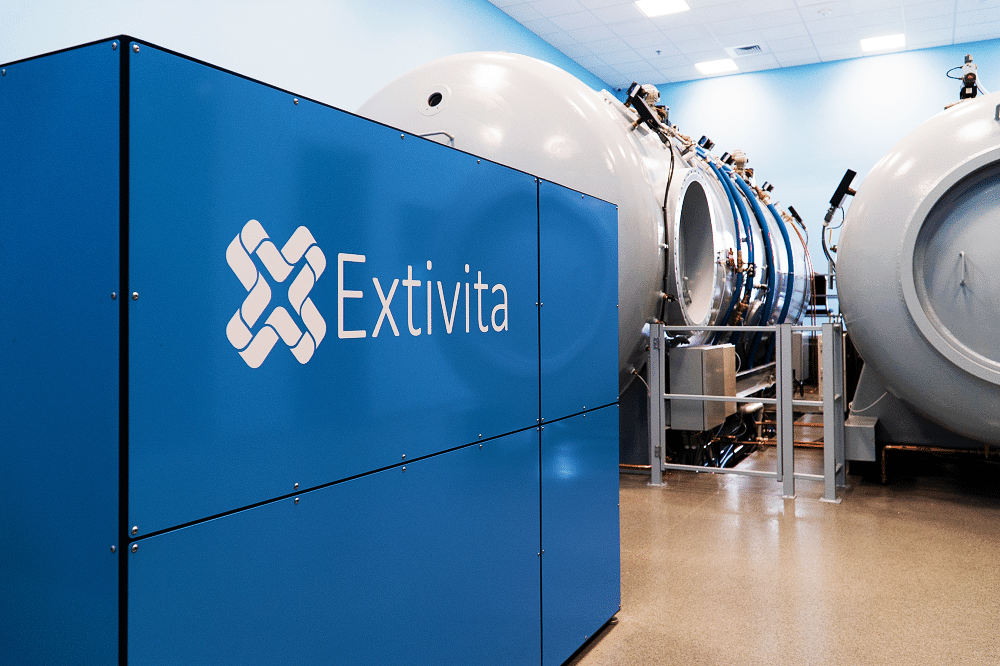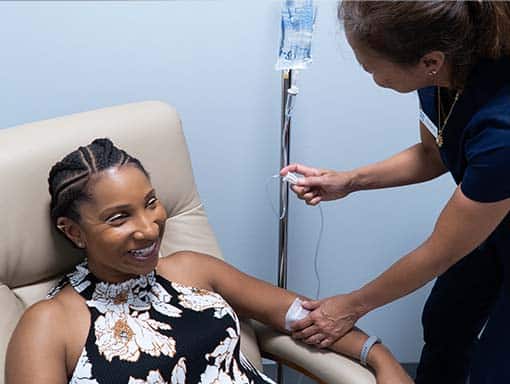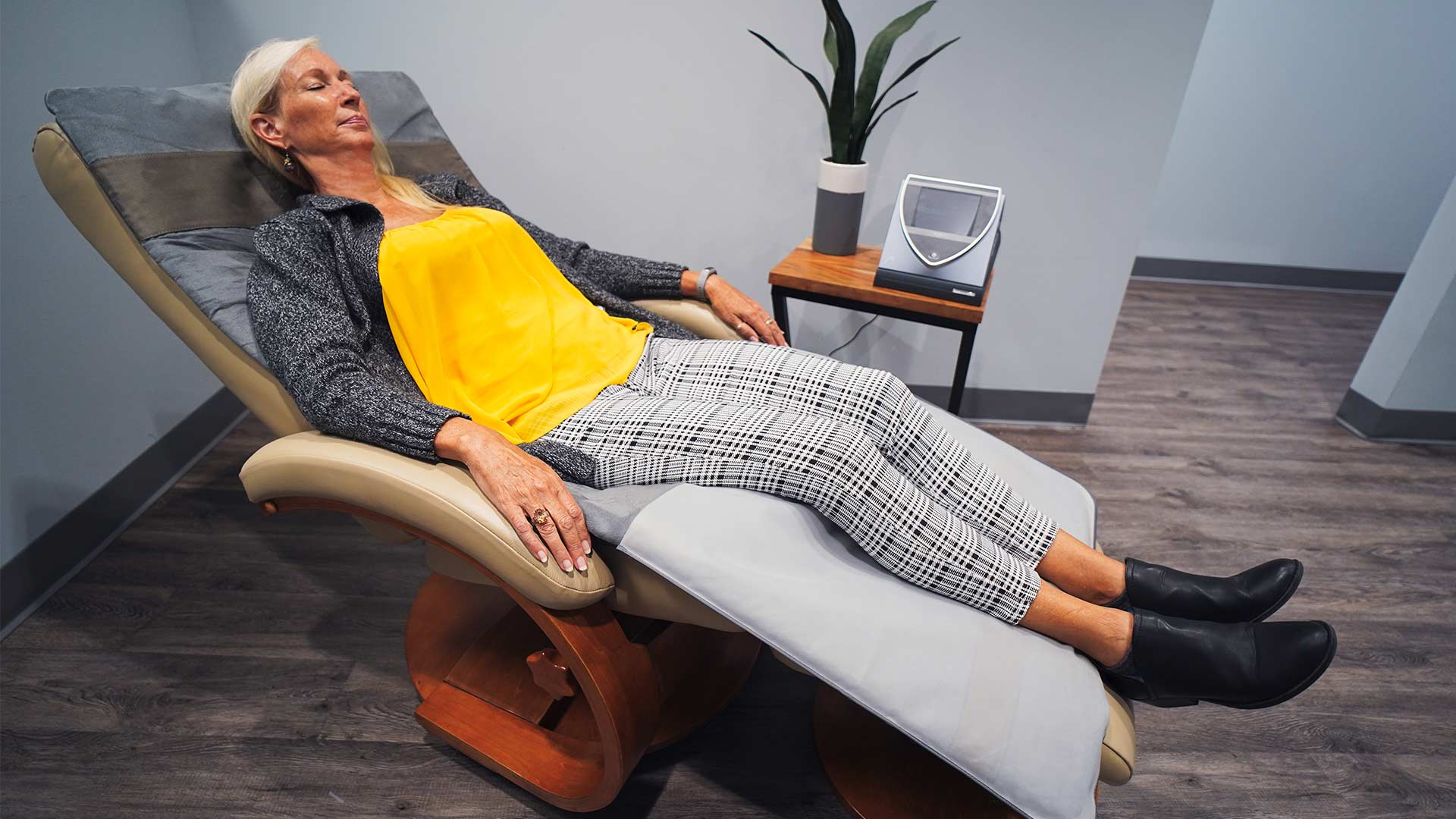Interstitial Lung Disease (ILD)
Interstitial Lung Disease (ILD) refers to a group of chronic lung conditions that cause inflammation and scarring (fibrosis) of the lung tissue. This scarring can make it increasingly difficult for the lungs to transfer oxygen into the bloodstream, often leading to shortness of breath, low oxygen levels, fatigue, and reduced physical function. As ILD progresses, some individuals may require supplemental oxygen and experience limitations in daily activities.
While standard care—including medications and pulmonary rehabilitation—remains essential, some patients explore additional therapies to help manage symptoms, support overall health, and improve quality of life.
Hyperbaric Oxygen Therapy (HBOT)
HBOT involves breathing 100% medical-grade oxygen in a pressurized chamber. This environment allows oxygen to dissolve more efficiently into the plasma, significantly increasing the amount of oxygen available to tissues—even when lung function is compromised.
While HBOT is not a cure for ILD and does not reverse lung scarring, early research suggests it may influence cellular processes involved in fibrosis. Additionally, HBOT is commonly used to support healing in conditions that may co-occur with ILD, such as non-healing wounds, autoimmune disorders, or radiation-related injuries. When used as a complementary therapy, HBOT may enhance overall comfort, resilience, and recovery.
Enhances oxygen delivery to the body’s tissues and organs

Helps modulate inflammation, including certain inflammatory markers (e.g., TNF-alpha) often elevated in lung disease
Supports healing in oxygen-deprived areas
Nutritional IV Therapy
Intravenous (IV) nutrient therapy delivers vitamins, minerals, and antioxidants directly into the bloodstream, bypassing the digestive system and allowing for greater absorption. While IV therapy is not a treatment for ILD itself, it may offer supportive benefits for patients living with chronic illness, fatigue, or inflammation.
Myers’ Cocktail IV
This well-known blend typically includes B vitamins, vitamin C, calcium, and magnesium. These nutrients may help support immune function, reduce fatigue, and improve overall energy—particularly for individuals with poor nutrient absorption or chronic stress.
Glutathione
Glutathione is a powerful antioxidant that helps protect cells—including lung tissue—from oxidative damage. Levels of glutathione are often depleted in chronic lung disease. IV supplementation may help reduce oxidative stress and support lung health.
NAD+ Therapy
NAD+ (Nicotinamide Adenine Dinucleotide) is essential for cellular energy and repair. Chronic illness and inflammation may reduce NAD+ levels, contributing to fatigue and slower recovery. IV NAD+ therapy may help restore energy metabolism, support mitochondrial health, and promote cellular resilience.
Pulsed Electromagnetic Field (PEMF) Therapy
PEMF therapy uses gentle, pulsed electromagnetic fields to stimulate the body at a cellular level. This non-invasive therapy is known to enhance circulation, support mitochondrial function, and modulate inflammation.
For individuals with ILD, PEMF may offer indirect support by:
- Encouraging microcirculation and oxygen delivery
- Increasing ATP (cellular energy) production
- Modulating pro-inflammatory signals such as TNF-alpha and IL-6
While PEMF is not a treatment for ILD, it may complement existing care by supporting overall wellness and reducing the systemic burden of inflammation.
Infrared Sauna
Infrared sauna therapy uses gentle light-based heat to warm the body directly, which may offer supportive benefits for individuals with Interstitial Lung Disease (ILD). While it does not treat the lungs themselves, it may help improve blood circulation and oxygen delivery by widening blood vessels, support detoxification through sweating, and reduce inflammation and oxidative stress—all of which may improve comfort and energy in people with chronic illness14-17. Additionally, infrared sauna use is known to promote relaxation and better sleep, potentially easing the physical and emotional burden of ILD.
Medical Disclaimer
The therapies described above are not FDA-approved for the treatment of Interstitial Lung Disease (ILD). They are considered complementary wellness modalities. This information is for educational purposes only and does not replace medical advice. Individual results may vary.
Resources
- Tibbles, Peter M., and George Edelsberg. “Hyperbaric-Oxygen Therapy.” New England Journal of Medicine, vol. 334, no. 25, 1996, pp. 1642–1648. https://doi.org/10.1056/NEJM199606203342506. ↩
- Camporesi, Enrico M. “Hyperbaric Oxygen Therapy: A Grand Old Lady or an Old Hyped-Up Therapy?” Critical Care Medicine, vol. 38, no. 2, 2010, pp. 682–683. https://doi.org/10.1097/CCM.0b013e3181c8feb5. ↩
- Thackham, J. A., et al. “The Use of Hyperbaric Oxygen Therapy to Treat Chronic Wounds: A Review.” Wound Repair and Regeneration, vol. 16, no. 3, 2008, pp. 321–330. https://doi.org/10.1111/j.1524-475X.2008.00372.x. ↩
- Kendall, Richard, et al. “Oxygen Therapy in Interstitial Lung Disease.” American Journal of Respiratory and Critical Care Medicine, vol. 188, no. 6, 2013, pp. 639–646. https://doi.org/10.1164/rccm.201212-2209CI. ↩
- Weaver, Lindell K., and Theodore J. Hopkins. “Hyperbaric Oxygen Therapy in the Treatment of Radiation-Induced Soft-Tissue Injury: A Clinical Review.” Undersea and Hyperbaric Medicine, vol. 42, no. 3, 2015, pp. 205–213. ↩
- Gaby, Alan R. “Intravenous Nutrient Therapy: The ‘Myers’ Cocktail.’” Alternative Medicine Review, vol. 7, no. 5, 2002, pp. 389–403.
https://pubmed.ncbi.nlm.nih.gov/12495370/ ↩ - Rahman, Irfan, and Irina Kodeboyina. “Oxidative Stress and Glutathione in Lung Disease.” American Journal of Physiology-Lung Cellular and Molecular Physiology, vol. 301, no. 6, 2011, pp. L712–L713. https://doi.org/10.1152/ajplung.00363.2011 ↩
- Beeh, Kai M., et al. “Glutathione Deficiency and Oxidative Stress in Idiopathic Pulmonary Fibrosis.” European Respiratory Journal, vol. 19, no. 6, 2002, pp. 1119–1124. https://doi.org/10.1183/09031936.02.00265402 ↩
- Verdin, Eric. “NAD+ in Aging, Metabolism, and Neurodegeneration.” Science, vol. 350, no. 6265, 2015, pp. 1208–1213. https://doi.org/10.1126/science.aac4854 ↩
- Ross, Christina L et al. “The Use of Pulsed Electromagnetic Field to Modulate Inflammation and Improve Tissue Regeneration: A Review.” Bioelectricity 1,4 (2019): 247-259. doi:10.1089/bioe.2019.0026
- Markov, Marko S. “Pulsed Electromagnetic Field Therapy: History, State of the Art and Future.” Environmentalist, vol. 27, no. 4, 2007, pp. 465–475. https://doi.org/10.1007/s10669-007-9128-2 ↩
- Vincenzi, Francesca, et al. “Pulsed Electromagnetic Fields Increase Adenosine Receptors and Production of Cytokines in Chondrocytes.” Journal of Cellular Physiology, vol. 215, no. 2, 2008, pp. 359–367. https://doi.org/10.1002/jcp.21306 ↩
- Pawluk, William D. Power Tools for Health: How Pulsed Magnetic Fields (PEMFs) Help You. FriesenPress, 2017.
- Laukkanen, Tanjaniina, et al. “Association Between Sauna Bathing and Fatal Cardiovascular and All-Cause Mortality Events.” JAMA Internal Medicine, vol. 175, no. 4, 2015, pp. 542–548. https://doi.org/10.1001/jamainternmed.2014.8187 ↩
- Crinnion, Walter J. “Sauna as a Valuable Clinical Tool for Cardiovascular, Autoimmune, Toxicant-Induced and Other Chronic Health Problems.” Alternative Medicine Review, vol. 16, no. 3, 2011, pp. 215–225. https://www.altmedrev.com/archive/publications/16/3/215.pdf ↩
- Masuda, Akiko, et al. “Repeated Thermal Therapy Diminishes Appetite Loss and Subjective Complaints in Mild Depression.” Psychosomatic Medicine, vol. 67, no. 4, 2005, pp. 643–647. https://doi.org/10.1097/01.psy.0000170837.38697.2b ↩
- Hussain, J., and M. A. Cohen. “Clinical Effects of Regular Dry Sauna Bathing: A Systematic Review.” Evidence-Based Complementary and Alternative Medicine, vol. 2018, 2018, Article ID 1857413. https://doi.org/10.1155/2018/1857413 ↩




